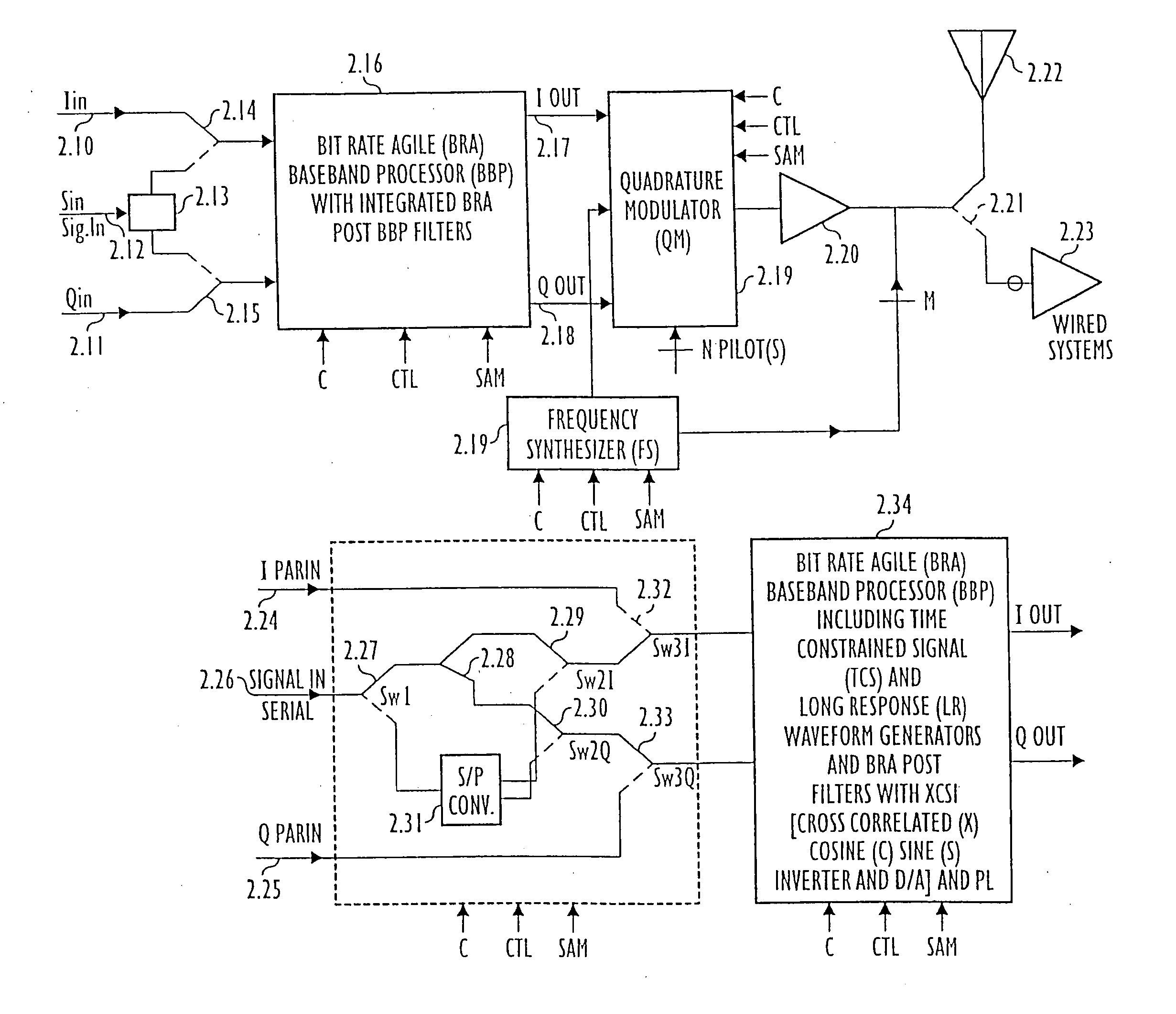Demodulation of multiple signals
a demodulation and signal technology, applied in the field of demodulation of multiple signals, can solve the problems of inability to introduce band-pass filtering, inability to achieve phase modulation carrier systems, etc., and achieve significant spectral saving advantages and robust performance.
- Summary
- Abstract
- Description
- Claims
- Application Information
AI Technical Summary
Benefits of technology
Problems solved by technology
Method used
Image
Examples
Embodiment Construction
Introductory Description of Embodiments of the Invention
[0100] This invention relates in part to Bit Rate Agile (BRA) signal processors and particularly to cross-correlated (abbreviated “CC” or “Xcor”) and to Agile Cascaded Mis-Matched (ACM) signal processors for increasing the RF spectral efficiency and RF power efficiency of modulated transmitted signals including digital binary, and digital multilevel signals, and of analog modulated signals operated in linearized (LIN) and in power efficient Non-Linearly Amplified (NLA) systems. Cross-correlated quadrature phase, frequency, and amplitude modulated Transmitter and Receiver (Transceiver) systems are described. The use of section headings is for convenience only and is not intended to delimit the discussion of particular aspects of the invention as aspects, features, embodiments, advantages, and applications are described through the specification and drawings. Acronyms are used extensively throughout the description to avoid exce...
PUM
 Login to View More
Login to View More Abstract
Description
Claims
Application Information
 Login to View More
Login to View More - R&D
- Intellectual Property
- Life Sciences
- Materials
- Tech Scout
- Unparalleled Data Quality
- Higher Quality Content
- 60% Fewer Hallucinations
Browse by: Latest US Patents, China's latest patents, Technical Efficacy Thesaurus, Application Domain, Technology Topic, Popular Technical Reports.
© 2025 PatSnap. All rights reserved.Legal|Privacy policy|Modern Slavery Act Transparency Statement|Sitemap|About US| Contact US: help@patsnap.com



